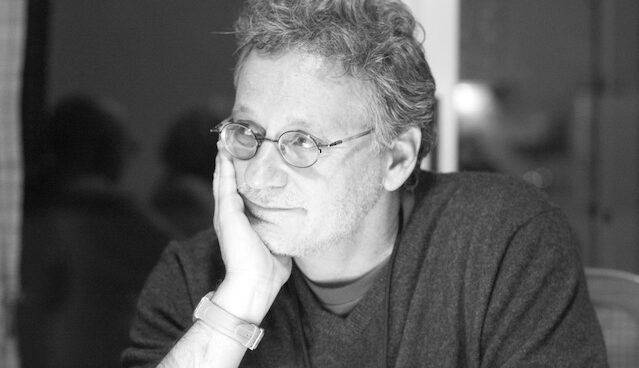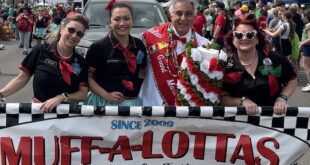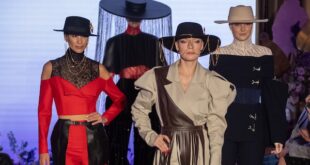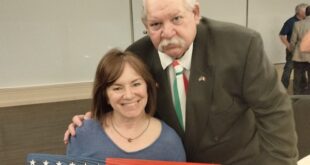In his award-winning book “Crying the News,” Vincent DiGirolamo brings the fast-fading history of 19th- and 20th-century newsboys back into focus.
The shopworn stereotype of the newsboy — some rosy-faced rascal hoisting the Five-Star Final above his head, shouting “EXTRA! EXTRA!” — is all most Americans know of this once-ubiquitous urban icon. Then, along comes Vincent DiGirolamo to tackle their story with the passion and precision of a front-page scribe.
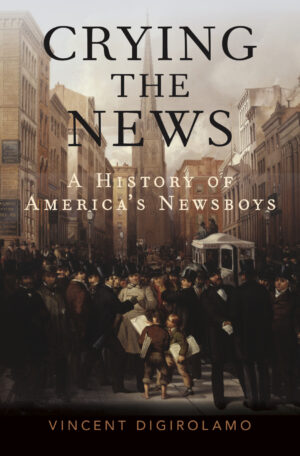 In “Crying the News: A History of America’s Newsboy” (Oxford University Press), DiGirolamo shines a light on this once-vibrant milieu, in the process preventing it from disappearing from our cultural memory. According to a source no less august than the Wall Street Journal, “The author has done prodigious research, and it’s hard to imagine what, if any of it, he has left out.”
In “Crying the News: A History of America’s Newsboy” (Oxford University Press), DiGirolamo shines a light on this once-vibrant milieu, in the process preventing it from disappearing from our cultural memory. According to a source no less august than the Wall Street Journal, “The author has done prodigious research, and it’s hard to imagine what, if any of it, he has left out.”
The scope and skill of “Crying” have earned DiGirolamo Cornell University’s Taft Labor History Award, the Organization of American Historians’ Frederick Jackson Turner Award for a first scholarly book on American history and the American Historical Association’s Eugenia M. Palmegiano Prize for most outstanding book on journalism history.
A history professor at Baruch College of the City University of New York, DiGirolamo grew up on stories his father and uncles told about selling papers on the streets of Boston and Monterey, California, during the Great Depression.
Lou&A spoke with DiGirolamo about his remarkable achievement and the familial roots that inspired his life and calling.
Lou&A: Tell us where you live these days and a bit about your Italian lineage.
Vincent DiGirolamo: I currently live in East Setauket, New York. I’m a native of Monterey, California, the descendent of Sicilian immigrants from Marsala on my father’s side and Portuguese immigrants from Madeira on my mother’s side. Sweet wine and salt water are in my blood.
Lou&A: How did growing up Italian influence your career path as a historian?
DiGirolamo: Monterey was home to a large Italian-American fishing community. They became wholesale fish dealers and opened a bar and restaurant, Angelo’s, on the wharf — and later a gift shop, art gallery and theater. The wharf was like a Little Italy: the heart of the community. The fishermen and merchants all spoke Italian to each other and played bocce by the old Custom House on Sundays. I grew up working at Angelo’s with all my aunts, uncles, cousins, siblings and enough ringers to keep the operation afloat.
Monterey was the capital of California before statehood. The past was always present in the street names and architecture — the Spanish adobes, the Presidio, the missions. You didn’t have to have a lot of imagination to know that you were dropped into a story that long preceded you.
This message also came across at home. My great-grandmother had a photograph of her son in an Italian military uniform hung in an oval frame up in a corner by the ceiling of her bedroom. He was killed in World War I. I had asthma as a child and spent a lot of time laying on that bed looking at that picture. It stimulated my curiosity about who he was, how he died and what that war was all about. I wondered who I’d be if my relatives had never come to the United States. I didn’t have the word for it, but I was intrigued by the contingency of the past — how easily things could have turned out differently.
Lou&A: The subject of newsboys seems like an unusual one to pursue for a book. What drew you to the topic?
DiGirolamo: My father and uncles told stories about hustling papers and shining shoes on the streets of Boston — how their older brother would smudge their faces and rip their clothing to make them look more pathetic and tippable, how they would have their earnings demanded by their bosses, who sometimes turned them upside down to shake out the coins hidden in their shoes.
Few historians took these unwaged child workers very seriously, except perhaps as objects of reform in the progressive era. But I thought it was intrinsically interesting to investigate the street as a workplace and to see how news-peddling might shed light on family economies and the process by which young people formed attitudes about class, power, justice, race, sex, politics — a whole host of issues. As a former journalist, I was also keen to turn my attention to the press itself, not just as the politically influential Fourth Estate, but as a pugnacious, non-smokestack industry that relied on vast numbers of people, including children, to manufacture and distribute the most perishable product in the world.
Lou&A: Who were these kids, exactly, and what kind of working conditions did they endure?
DiGirolamo: Newsboys generally ranged in age from 6-16, though younger kids were sometimes spotted and remarked upon. The news trade always attracted the hungriest children in the city, predominantly children of immigrants. Irish Americans dominated their ranks in the 1840s and 1850s, followed by Jews and Italian Americans in the 1880s and 1890s. There were no bars to access. New immigrants didn’t even have to speak English. All they needed was a few coins to buy a stack of papers. And they didn’t always need that; suppliers would sometimes give them papers on credit. Though absent from the Horatio Alger myth of success, African Americans were always part of the trade. In fact, they tended to stay in it longer than white boys because so many other occupations were closed to them. Girls, too, peddled papers, though in far fewer numbers and without the moral approval that boys received. “Girls who begin with selling newspapers usually end in selling themselves,” one New York police captain said.
Most newsboys lived at home with their families and would sleep on the streets in good weather to be closer to the newspaper offices. But a good many were homeless, especially during the economic downturns of the 1850s, 1870s and 1890s. Runaways and orphans sometimes found shelter in newsboys’ homes or lodging houses.
Lou&A: Did you at any point feel the presence or influence of your forebears as you wrote?
DiGirolamo: I couldn’t help but notice how much scorn Italian Americans in the trade generated. The press ridiculed them as “Tony newsboys” who were obsessed with “money-getting.”
Lou&A: What other topics call out to you at this point?
DiGirolamo: I have two projects underway. One is a biography of a radical Gilded Age journalist. I’m also steeping myself in Italian-American history and literature, and teaching courses on the subject, with an eye toward writing about the close relationship between Italians and blacks at the bottom of the working class.
For more information about “Crying the News: A History of America’s Newsboy,” visit vincentdigirolamo.com.
The above appears in the December 2020 issue of the print version of Fra Noi. Our gorgeous, monthly magazine contains a veritable feast of news and views, profiles and features, entertainment and culture. To subscribe, click here.
 Fra Noi Embrace Your Inner Italian
Fra Noi Embrace Your Inner Italian


